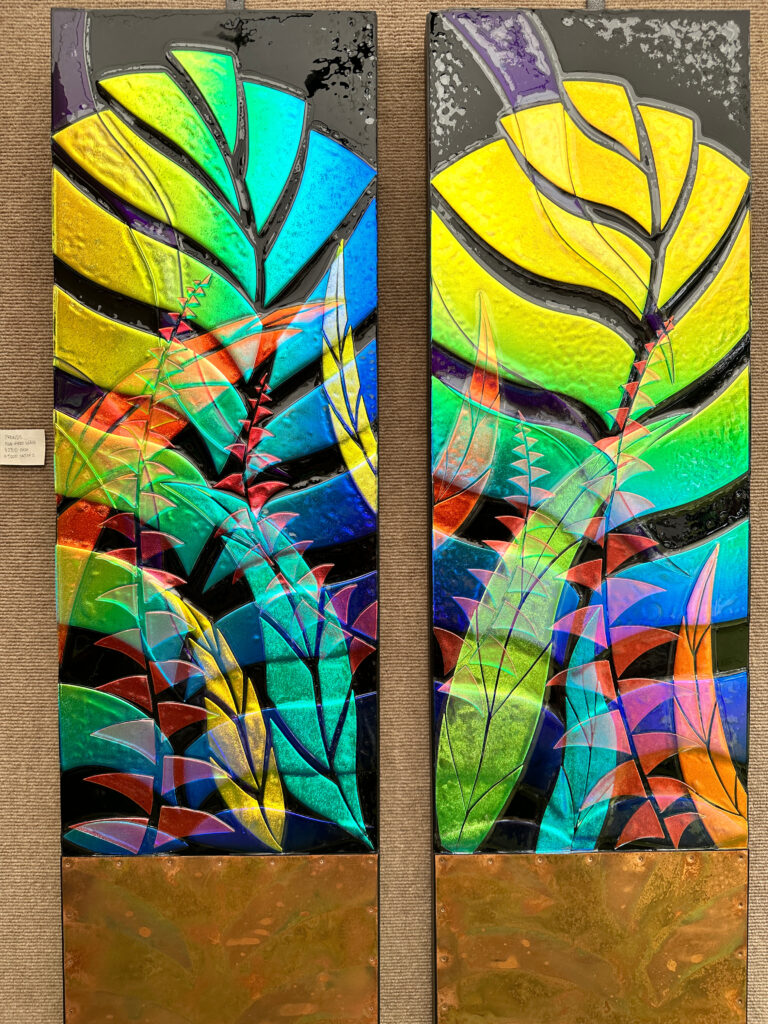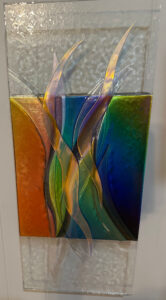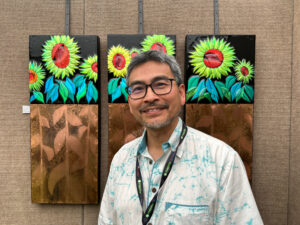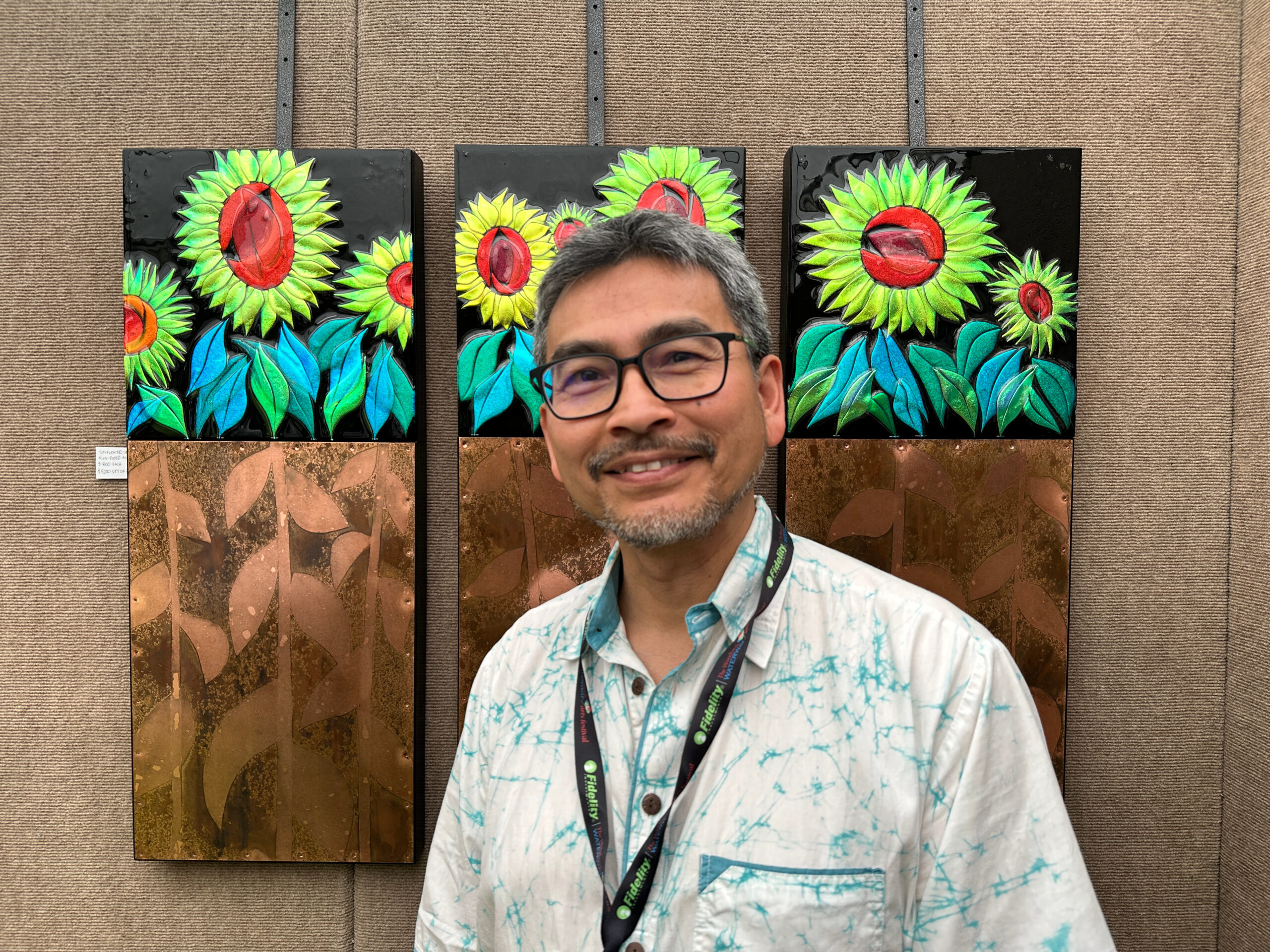I met glass artist Syed Ahmad at The Woodlands Waterway Arts Festival. This annual festival in The Woodlands (Houston) is held in mid-April. It attracts a wide range of artists from all over the country, and has been held for 18 years. As a juried festival, only art of high quality is on offer.
Ahmad, based in North Carolina, has been doing this work for 25 years. I interviewed him about the process for creating his visually arresting works.
“How is it made? What I do is called kiln-fired glass; another word used is fused glass. So I start out with pane glass (similar to what you find on the window), stained glass, and mostly dichroic glass.
“Dichroic glass is 2-colour. Dichroism happens in nature; it reflects one colour and then lets through another colour. So it’s like a prism – it takes white light, and reflects two colours. Usually the ones reflected and transmitted are opposing spectrum. But these dichroic pieces, if you walk by it you will see the colour shifts. This is because the colour shift is not just one colour that’s being relected, it’s actually a narrow spectrum. The colour shift is like what’s in the rainbow.”

 The use of dichroic glass goes back to ancient Roman times, but the glass he uses comes from the space agency NASA. “A NASA engineer came in and he said ‘I work on that, we put it on the windshield of the space shuttle,’ so it’s basically a filter device. It’s made in a vacuum chamber. They burn metal oxide in molecule-size layers, and then quartz, and keep repeating these layers. The thickness is what’s going to break the white light and get it in phase and cancel out some colours. Any of the dichroic that I get are from 16-23 layers. That’s my raw material; I just get the glass in bog sheets. I say I want this and that colour, and they make it for me. Then I cut and shape. So all the shapes that you see are cut glass. I use the shapes and lines, and layer it to do a collage with anywhere from 4 to 8 layers and do my designs that way.
The use of dichroic glass goes back to ancient Roman times, but the glass he uses comes from the space agency NASA. “A NASA engineer came in and he said ‘I work on that, we put it on the windshield of the space shuttle,’ so it’s basically a filter device. It’s made in a vacuum chamber. They burn metal oxide in molecule-size layers, and then quartz, and keep repeating these layers. The thickness is what’s going to break the white light and get it in phase and cancel out some colours. Any of the dichroic that I get are from 16-23 layers. That’s my raw material; I just get the glass in bog sheets. I say I want this and that colour, and they make it for me. Then I cut and shape. So all the shapes that you see are cut glass. I use the shapes and lines, and layer it to do a collage with anywhere from 4 to 8 layers and do my designs that way.
“I like graceful lines, I don’t want them to interact or intersect. After I do all the cutting and design work, then I put it in the kiln to fire it. They all melt and fuse together, hence fused glass. The kiln time is anywhere from 12 hrs for the 6×6-inch pieces I make; the bigger pieces take 2 days. I fire my pieces at 1400 C.”
Ahmad has a major Texas connection too: he has a Bachelor of Science degree from the Univ. of Texas in El Paso. He accepts commissions to create art that will fit whatever design space you want. Visit his website to puchase some fine art: syedARTglass.com
For the two vertical pieces shown here in the large photo, entitled Fronds, the pair is priced at $5,200. For the piece in the smaller image at left, he extended the design lines within the dichroic glass to the clear glass above and below. This creates a larger format ‘painting.’
The 2024 Festival will be held Apr 12-14
https://www.thewoodlandsartscouncil.org/p/festival

